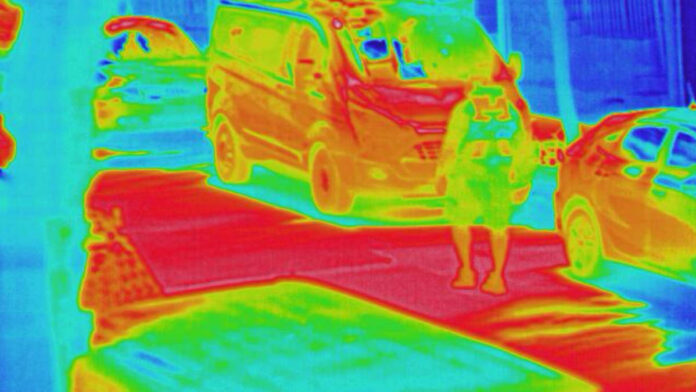Strengths and Weaknesses of Thermal Surveillance Cameras In Perimeter Security Applications.
Strengths and Weaknesses of Thermal Surveillance Cameras – What are the strengths and weaknesses of thermal surveillance cameras – are they a viable solution for perimeter security applications?
A: Thermal cameras can detect warm objects, including people and vehicles, day and night, regardless of weather, darkness and tree cover, at distances ranging from several hundred to thousands of metres.
The latest thermal cameras can penetrate fog, smoke and mist, as well as darkness. They are compact and comparatively lightweight – especially when required scene depths are moderate. They have modest power consumption and the ability to function on power up. Like most passive sensing devices, mean time between failure is lengthy.
The sorts of applications that best suit thermal cameras have a security team, fast contract patrol response to off-site monitoring, use the cameras to drive alarm inputs, or need real time situational awareness on high security perimeters. Video verification of alarm events is another ideal application.
Thermal makes for a massive extension of perimeter detection capability – for big sites like mines, power generation and industrial facilities with line of sight along perimeters, thermal is a great solution. It can work in the city, too, especially if you are protecting rooftops, bridges or water approaches.
The key weakness of thermal cameras is that this imagery does not provide optical detection, including plates and faces, though some cameras are far better than others in this regard – especially those with higher resolution sensors. Many thermal cameras do incorporate thermal and optical sensors.
There are some limitations with respect to fog and rain with thermals – moisture can attenuate signals, but performance remains worthwhile, even in tough applications in poor imaging conditions. Cost is another factor. Quality thermal cameras can get expensive.
The heart of any modern thermal imaging camera is the un-cooled microbolometer – essentially that’s a bolometer fitted as an image sensor. This sensor is responsive to IRE in the 8-13um range.
When IRE reaches the microbolometer, it generates a cascade of electrical signals based on resistance which can be analysed to construct an image based on heat signals. When you’re selecting a thermal camera, you want coverage of that long 8um to 13um spectral band – that’s the spot you’ll get best penetration of smoke, fog and rain.
In terms of image quality, options include 160 x 120, 320 x 240 and 640 x 480 pixels. Thermal cameras will usually have fixed lenses, but some are now being released with PT and zoom functionalities.
Basic control features include freeze/live, horizontal and vertical flip, black-hot/white-hot/etc, colour palette control, histogram display, automatic contrast enhancement, gamma correct ion and digital zoom. Integration with the latest VMS solutions is typically very good.
If your application suits thermal, they are definitely a viable solution. If thoughtfully installed with video analytics in support they are the least expensive long-range perimeter detection technology available, in SEN’s opinion.
You can find thermal cameras here or read more SEN news here.
“Strengths and Weaknesses of Thermal Surveillance Cameras In Perimeter Security Applications.”













